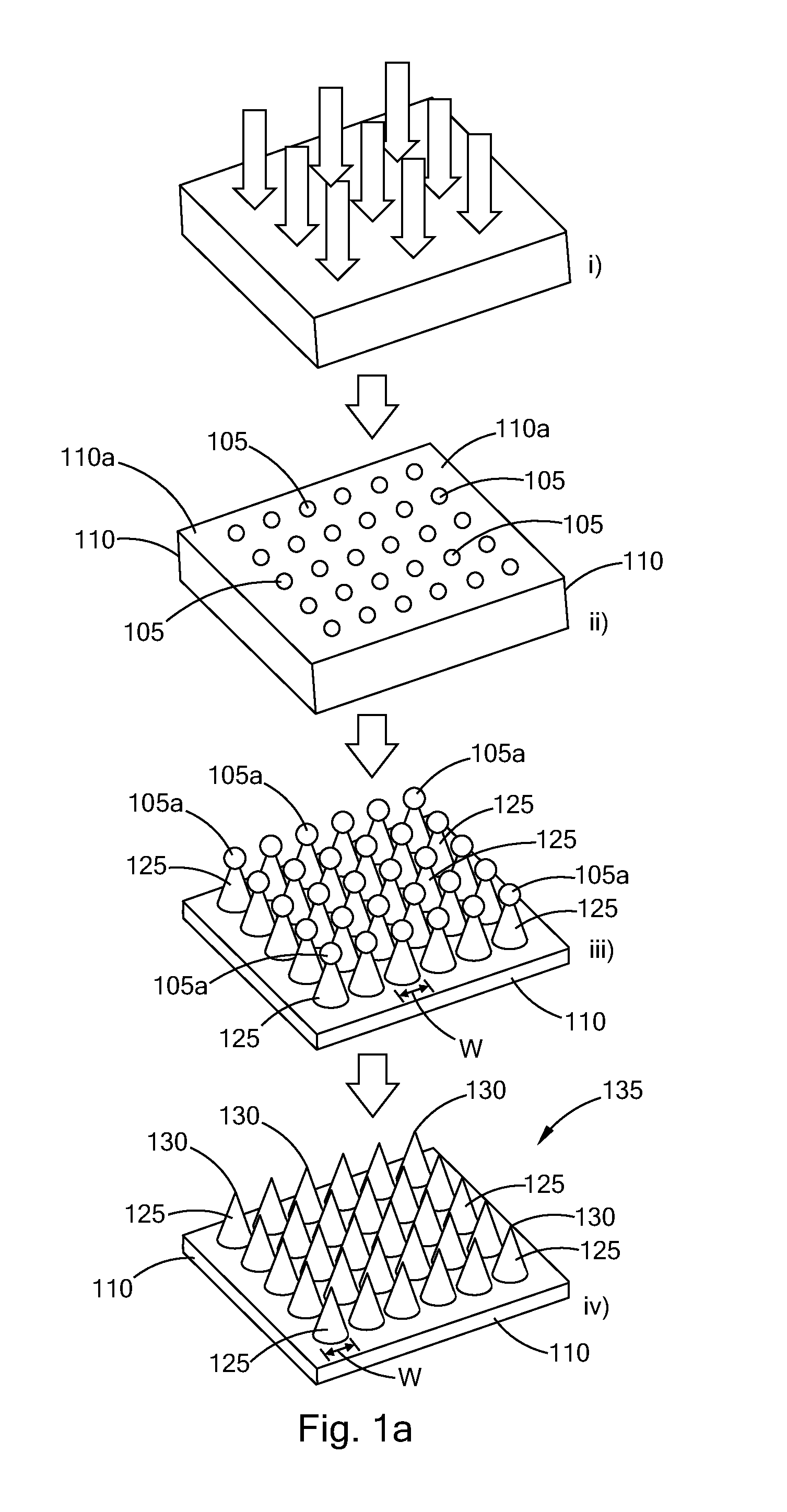Method of forming an array of nanostructures
a nanostructure and array technology, applied in the field of nanofabrication methods, can solve the problems of high cost and low yield, and achieve the effects of high reliability, repeatability, and controllability, and inherent capability
- Summary
- Abstract
- Description
- Claims
- Application Information
AI Technical Summary
Benefits of technology
Problems solved by technology
Method used
Image
Examples
Embodiment Construction
[0039]A unique, synchronized and simultaneous top-down and bottom-up nanofabrication approach called simultaneous plasma enhanced reactive ion synthesis and etching (SPERISE) is described. For the first time, the atomic addition and subtraction of nanomaterials can be concurrently observed and precisely controlled in a single step process permitting ultrahigh-throughput, lithography-less, wafer-scale and room-temperature nanomanufacturing. Rapid low-cost manufacturing of high-density, high-uniformity, light-trapping nanocone arrays has been demonstrated on single crystalline and polycrystalline silicon wafers, as well as on amorphous silicon thin films. Proposed nanofabrication mechanisms discussed below provide a general guideline to designing new SPERISE methods for other solid-state materials besides silicon.
[0040]A key mechanism underlying the SPERISE method is the concurrent reactive ion nucleation process with the reactive ion etching process. In a plasma-enhanced multiple ion...
PUM
| Property | Measurement | Unit |
|---|---|---|
| etch rate | aaaaa | aaaaa |
| etch rate | aaaaa | aaaaa |
| width | aaaaa | aaaaa |
Abstract
Description
Claims
Application Information
 Login to View More
Login to View More - R&D
- Intellectual Property
- Life Sciences
- Materials
- Tech Scout
- Unparalleled Data Quality
- Higher Quality Content
- 60% Fewer Hallucinations
Browse by: Latest US Patents, China's latest patents, Technical Efficacy Thesaurus, Application Domain, Technology Topic, Popular Technical Reports.
© 2025 PatSnap. All rights reserved.Legal|Privacy policy|Modern Slavery Act Transparency Statement|Sitemap|About US| Contact US: help@patsnap.com



